 W
WAmerican Massacre: The Tragedy At Mountain Meadows, September 1857 is a non-fiction historical book by investigative reporter and author Sally Denton, released by Alfred A. Knopf in 2003.
 W
WThe Baker–Fancher party was the name used to collectively describe the American western emigrants from four northwestern counties in Arkansas, specifically Marion, Crawford, Carroll, and Johnson counties, who departed Carroll County in April 1857 and "were attacked by the Mormons near the rim of the Great Basin, and about fifty miles from Cedar City, in Utah Territory, and that all of the emigrants, with the exception of 17 children, were then and there massacred and murdered" in the Mountain Meadows massacre. Sources estimate that between 120 and 140 men, women and children were killed on September 11, 1857, at Mountain Meadows, a rest stop on the Old Spanish Trail, in the Utah Territory. Some children of up to six years old were taken in by the Mormon families in Southern Utah, presumably because they had been judged to be too young to tell others about the massacre.
 W
WBlood of the Prophets: Brigham Young and the Massacre at Mountain Meadows (2002) by Will Bagley is a history of the Mountain Meadows massacre. The work updated Juanita Brooks' seminal history The Mountain Meadows Massacre, and remains one of the definitive works on the topic.
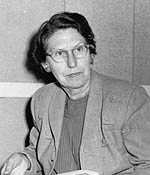 W
WJuanita Pulsipher Brooks was an American historian and author, specializing in the American West and Mormon history, including books related to the Mountain Meadows Massacre, to which her grandfather Dudley Leavitt was sometimes linked.
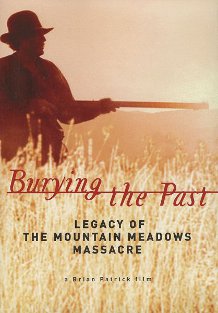 W
WBurying the Past: Legacy of the Mountain Meadows Massacre is a 2004 documentary film about the Mountain Meadows massacre. It was directed by Brian Patrick and has won 11 awards, but the producers were unable to obtain theatrical release for the film.
 W
WJames Henry Carleton was an officer in the U.S. Army and a Union general during the American Civil War. Carleton is best known as an Indian fighter in the southwestern United States.
 W
WJohn Cradlebaugh was the first delegate to the United States House of Representatives from Nevada Territory.
 W
WIsaac Chauncey Haight, an early convert to the Latter Day Saint Movement, was a pioneer of the American West best remembered as a ringleader in the Mountain Meadows massacre. He was raised on a farm in New York, and became a Baptist at age 18, hoping to become a missionary in Burma. He educated himself, and found work as a schoolteacher. He converted to Mormonism and set out to convert others in his neighborhood, building up a branch with forty members. To escape religious persecution, his family arrived in Nauvoo, Illinois in July, 1842.
 W
WJacob Hamblin was a Western pioneer, Mormon missionary, and diplomat to various Native American tribes of the Southwest and Great Basin. He aided European-American settlement of large areas of southern Utah and northern Arizona, where he was seen as an honest broker between Mormon settlers and the Natives. He is sometimes referred to as the "Buckskin Apostle," or the "Apostle to the Lamanites." In 1958, he was inducted into the Hall of Great Westerners of the National Cowboy & Western Heritage Museum.
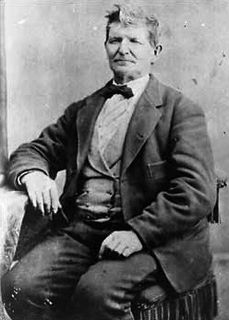 W
WJohn Doyle Lee was an American pioneer and prominent early member of the Latter Day Saint Movement in Utah. Lee was later convicted as a mass murderer for his complicity in the Mountain Meadows massacre, sentenced to death and was executed in 1877.
 W
WBrigham Dwaine Madsen was a historian of indigenous peoples of the American West, of the people of Utah and surrounding states, and of Mormonism. He was a professor at the University of Utah.
 W
WMassacre at Mountain Meadows is a book by Latter-day Saint historian Richard E. Turley, Jr. and two Brigham Young University professors of history, Ronald W. Walker and Glen M. Leonard. Leonard was also the director of the Museum of Church History and Art in Salt Lake City, Utah. The book concerns the 1857 Mountain Meadows massacre in southern Utah, and is the latest study of the subject.
 W
WThe Mormon Prophet and His Harem; or, an Authentic History of Brigham Young, His Numerous Wives and Children. is a biography of Brigham Young by C. V. Waite, first published in 1866.
 W
WMormonism Unveiled; or The Life and Confessions of the Late Mormon Bishop, John D. Lee is a book by John D. Lee, first published in 1877, just after the author's execution for his complicity in the Mountain Meadows massacre. It was dictated to, and edited by, Lee's attorney, William W. Bishop.
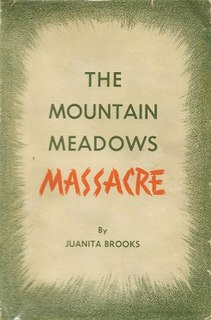 W
WThe Mountain Meadows Massacre (1950) by Juanita Brooks was the first definitive study of the Mountain Meadows massacre.
 W
WThe Mountain Meadows Massacre is a 2001 documentary film about the Mountain Meadows massacre. It was produced by Eric Young with Dave Chase, Jan Walker and Larinda Wenzel and distributed through The Studio, Inc.
 W
WThere have been several remembrances of the Mountain Meadows Massacre including commemorative observances, the building of monuments and markers, and the creation of associations and other groups to help promote the massacre's history and ensure protection of the massacre site and grave sites.
 W
WSeptember Dawn is a 2007 Canadian-American Western drama film directed by Christopher Cain, telling a fictional love story against a controversial historical interpretation of the 1857 Mountain Meadows massacre. Written by Cain and Carole Whang Schutter, the film was a critical failure and box office disappointment.
 W
WWells W. Spicer was an American journalist, prospector, politician, lawyer and judge whose legal career immersed him in two significant events in frontier history: the Mountain Meadows massacre in the Utah Territory in 1857; and the 1881 shootout commonly known as the Gunfight at the O.K. Corral in Tombstone, Arizona Territory. After he left Tombstone, he returned to prospecting. He disappeared in 1885 or 1887.
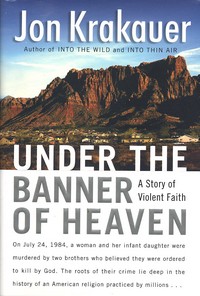 W
WUnder the Banner of Heaven: A Story of Violent Faith is a nonfiction book by author Jon Krakauer, first published in July 2003. He investigated and juxtaposed two histories: the origin and evolution of The Church of Jesus Christ of Latter-day Saints, and a modern double murder committed in the name of God by brothers Ron and Dan Lafferty, who subscribed to a fundamentalist version of Mormonism.
 W
WBrigham Young was an American religious leader, politician, and colonizer. He was the second president of The Church of Jesus Christ of Latter-day Saints from 1847 until his death in 1877. He founded Salt Lake City and served as the first governor of the Utah Territory. Young also led the foundings of the precursors to the University of Utah and Brigham Young University.